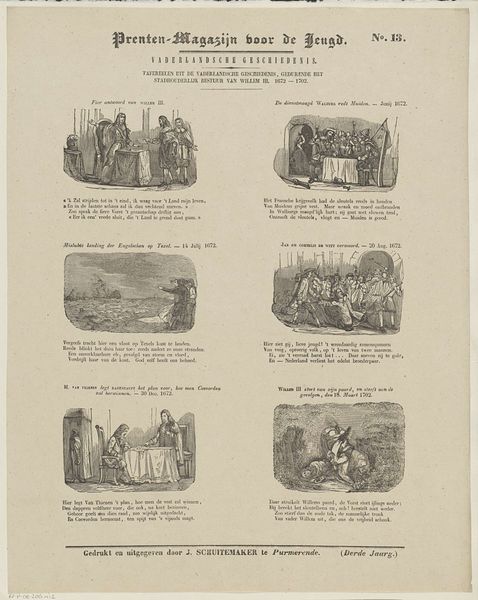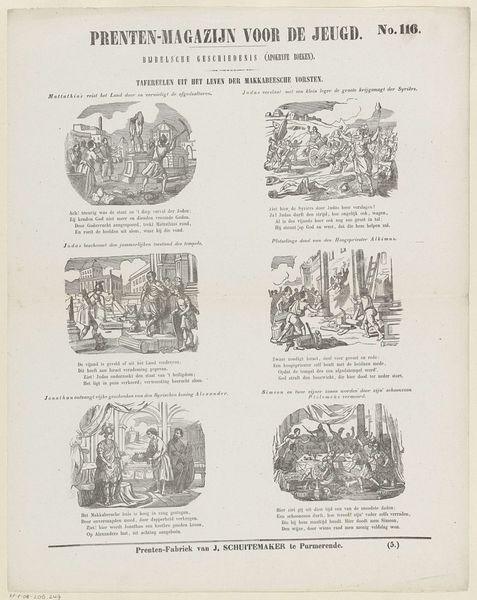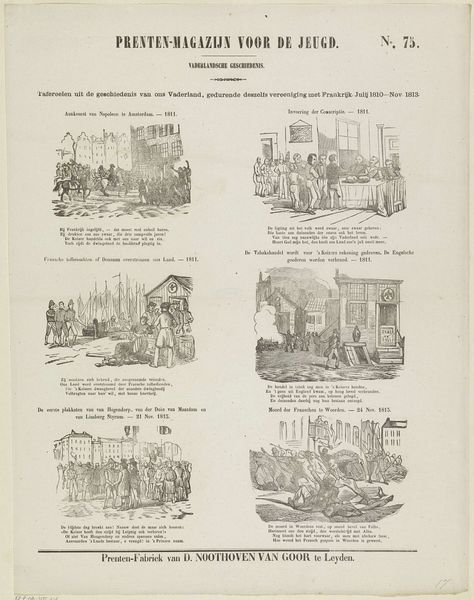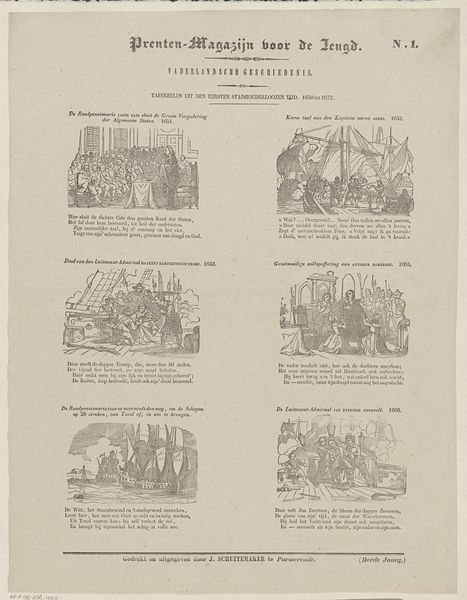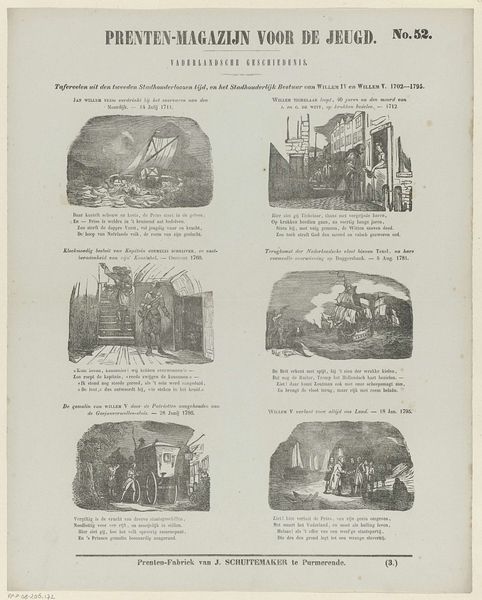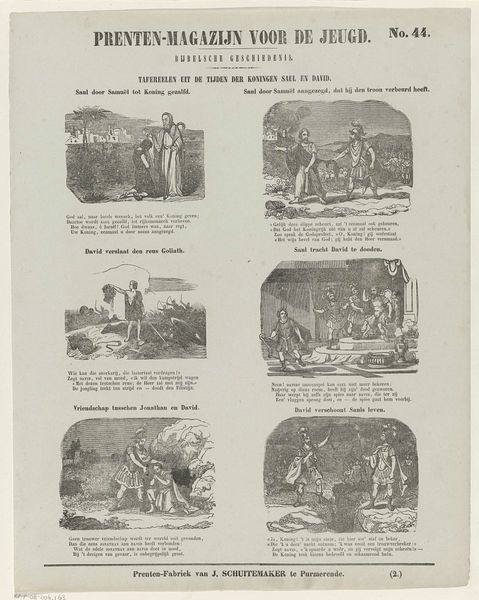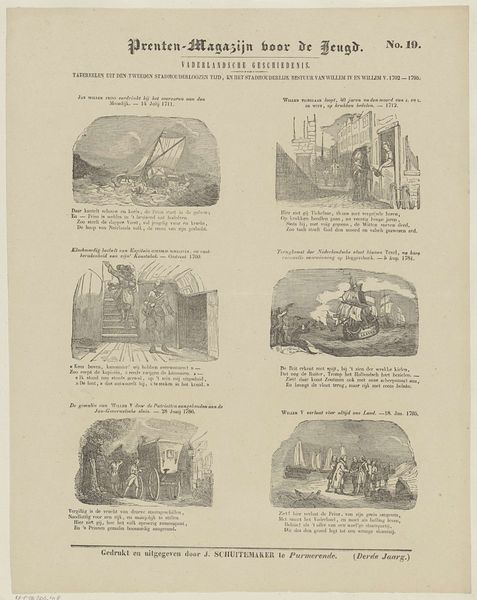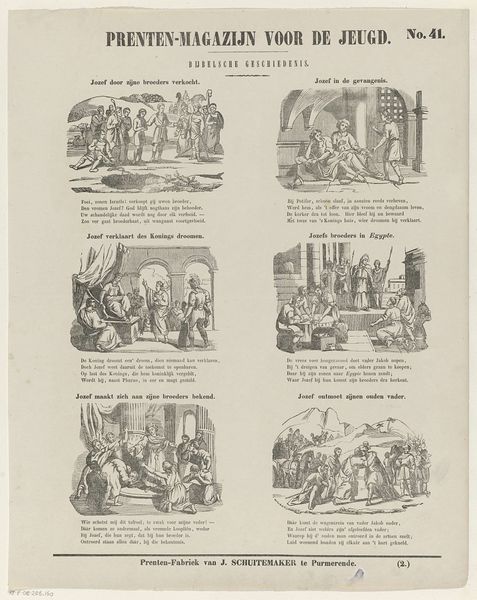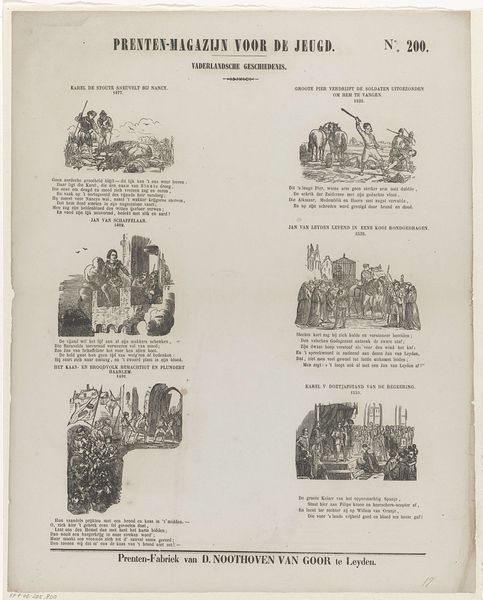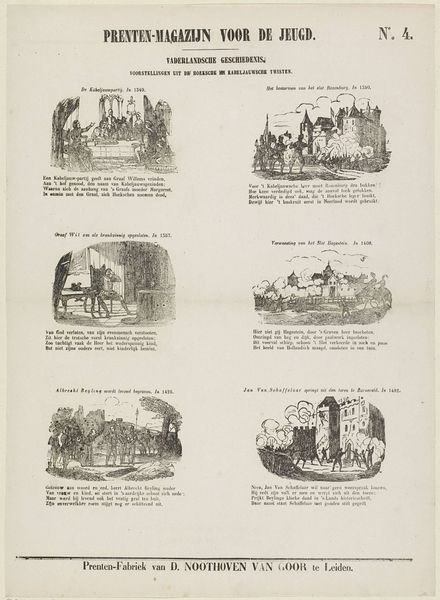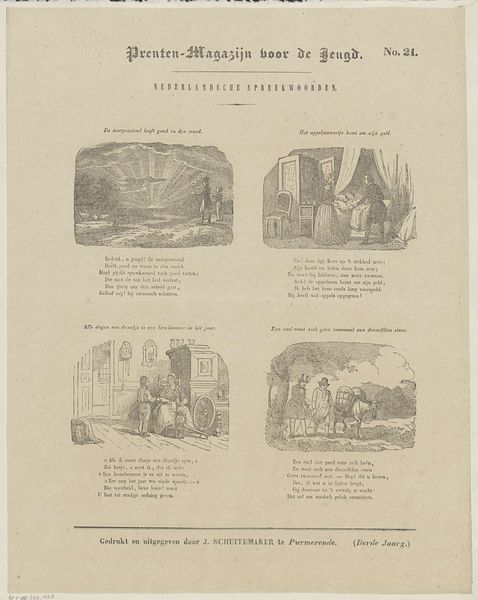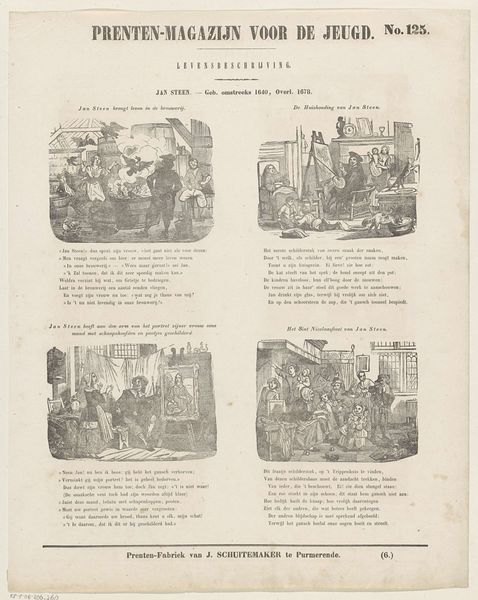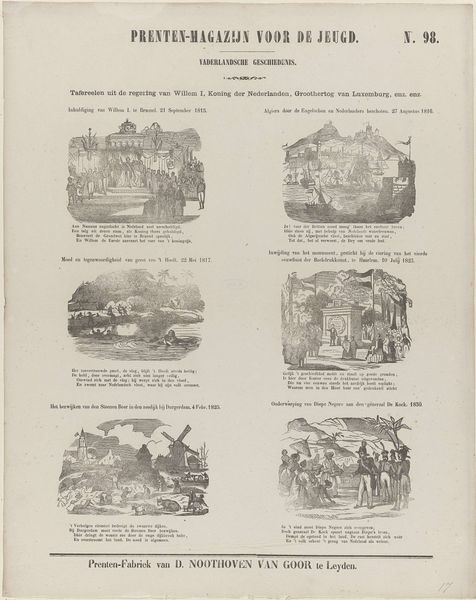
Tafereelen uit de vaderlandsche geschiedenis, gedurende het stadhouderlijk bestuur van Willem III 1672-1702 1850
0:00
0:00
graphic-art, print, engraving
#
graphic-art
#
narrative-art
#
dutch-golden-age
# print
#
history-painting
#
engraving
Dimensions: height 422 mm, width 339 mm
Copyright: Rijks Museum: Open Domain
Curator: This print, titled *Tafereelen uit de vaderlandsche geschiedenis, gedurende het stadhouderlijk bestuur van Willem III 1672-1702,* created around 1850 by Jan Schuitemaker, really strikes me with its layered narratives and miniature scenes, like a comic strip about the Dutch Golden Age. It has this old newspaper print vibe. How do you read this image? Editor: Well, it feels very…didactic? Like a historical textbook page almost. What should we take away from seeing this graphic today? Curator: Schuitemaker uses history-painting to shape collective memory, but it is from a very particular viewpoint. These prints circulated widely among young people. I would want us to think about whose version of history we’re seeing, who is left out, and why these stories are presented in this format for youth consumption. Can we look critically at what “national history” is and who it serves? Editor: So you are suggesting we look at it through the lens of the artist's own context and the values he's trying to instill in young people? Curator: Precisely! Consider the narrative: What messages are being promoted? The leader, Willem III, and historical moments – are these designed to instill patriotism, and what conception of citizenship does it push? Who gets to be the hero here? What does that say about Dutch identity then and now? Editor: That makes me consider it very differently! I was looking at it purely from an art-historical point of view, but I can see how the image functioned as a tool for shaping social consciousness and Dutch heritage. Curator: Exactly. Visual culture can be such a powerful tool, right? The very act of representing history impacts how that history is understood. It's fascinating, don't you think? Editor: It is, it really is. I'm starting to see this piece, and the practice of history painting, with new eyes! Thank you for illuminating how this historical narrative functions ideologically!
Comments
No comments
Be the first to comment and join the conversation on the ultimate creative platform.
